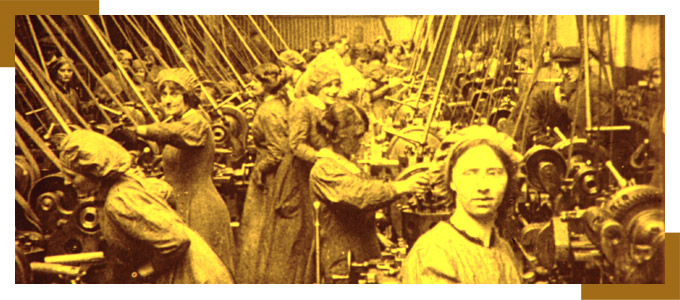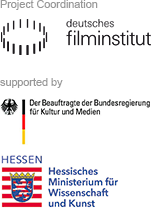Workplan

The EFG1914 project consists of the following nine work packages:
WP1: Content selection and monitoring
WP2: Digitisation planning, preparation and best practice
WP3: Transfer and mastering film to digital format
WP4: Ingest, encoding and access
WP5: Digitisation and delivery of non-film material
WP6: Interoperability with EFG and Europeana
WP7: Virtual exhibition
WP8: Dissemination and awareness
WP9: Co-ordination and management
WP1: Content selection and monitoring
Leader: Det Danske Filminstitut
Before the physical selection of the source material to be transferred can be done, a clear content selection plan needs to be drawn up. This plan will guide the digitisation of films and film-related material in identifying priorities, categorizing the content in the sub-themes described above, and setting up a digitisation schedule which will guide all partners in the project and it will allow a close monitoring of the content provision activities. A content selection workshop involving all archives will be held to communicate and finalize this plan in the early stages of the project. The content selection plan will also serve as the main tool for detecting and preventing double digitisation of the same film work by two partners. After the digitisation plan has been defined, the progress monitoring of the digitisation work to be done in WP2 and WP3 will start. Hence, the goal of WP1 is to provide a clear plan containing information about which items will be available at which point in time. A close monitoring will provide the project management with information about possible deviations from the schedule, enabling the co-ordinator and the content provider to work out counter-measures in due time, thereby mitigating possible risks threatening the content provision goals of the project.
WP2: Digitisation planning, preparation and best practice
Leader: Det Danske Filminstitut
Selecting the moving image content to be digitized is a complex process involving many different aspects of collection management. The objective of WP2 is to create coherence in the selection and digitization process, ensuring that both content selection and the technical aspects of transfer and digitization follow standards that are agreed upon and understood by the project’s partners. WP2 will collect and oversee the implementation of already described best practices from other EU projects, such as EFG, EDCINE, PRESTO PRIME, PRESTO COMPETENCE CENTER, as well as from the broadcast and film production industries. It will furthermore ensure that the selection of content is coherent and follows procedures that are in line with the output objectives of the project. Support by Fraunhofer IIS is needed and will be provided especially for Tasks 2.3 and 2.4 to provide for WP2 output (to be documented in D2.1) in line with latest scientific findings as well as technological and standardization developments.
WP3: Transfer and mastering film to digital format
Leader: EYE Stichting Film Instituut Nederland
The objective of WP3 is to streamline the process of transferring film elements held in archives into a standard digital master format. The transfer of film to a digital master is a very cost-intensive process and involves highly specialized equipment. Since the transfer hardware (scanners) is financially out of reach for many film archives, several partners will exercise the transfer from film to digital formats by sub-contracting. WP3 will supply the content providers, who need to outsource the transfer, with a standard tender comprising the quality and cost requirements expected. The project will focus on providing a model infrastructure for handling and distributing digital film elements as files. The project will therefore focus on creating a fully digital file-based solution supporting modern Digital Cinema formats, thus giving digital access to the film heritage in full cinema resolution. This will enable use both on web-platforms, as well as Video on Demand and cinema screens. Input from Fraunhofer IIS will be essential for carrying out Task 3.1 and the delivery of D3.1.
WP4: Ingest, encoding and access
Leader : Cinémathèque royale de Belgique
The overreaching objective of WP4 is to ingest and convert the uncompressed digital masters created in WP3 into the encoding workstation in order to create compressed high quality master files (MAP) and lower quality distribution files for EFG and Europeana. Even if the primary delivery format for the project are low resolution files for web distribution by EFG and Europeana, the project wishes to enable the content providers with an opportunity to handle any relevant format up to Digital Cinema quality. The encoding process consists of several discrete steps. WP4 is to implements the processes defined in WP2 for ingestion and encoding. It is expected that each participating archive adopts the defined processes in order to be able to carry out all important steps in-house. An easy to use encoder and metadata handling interface is chosen or developed and integrated into possibly already existing digital processes by the individual archives.WP4 enables each of the content providers to create encoded digital master data files. WP4 also ensures that the produced encoded digital master files can be re-encoded to the distribution formats chosen by Europeana and European Film Gateway.An important aspect of the project is to additionally enable the film archive community to internally ingest digital motion picture content and handle the resulting data. WP3 and WP4 therefore also implements a model ingestion and encoding process within each film archive, as well as generating the skill and knowledge within the archive to handle this additional process in a sustainable manner.
WP5: Digitisation and delivery of non-film material
Leader: Deutsches Filminstitut – DIF e.V.
The objective of WP5 is to digitise film-related non-film items that are associated with the theme of WWI in general or that are related to individual films to be digitised in WPs 3 & 4. By including these non-AV items, the project delivers a more comprehensive picture of the film collections made accessible. These documents vividly display and make accessible the context in which the moving images were produced, distributed and received. Relevant materials are, among others, film programmes, censorship documents, production-related correspondence, periodicals, still and set photographies etc. Upon selection in WP1, the relevant materials are to be prepared for scanning, typically with the result of a high-quality, uncompressed TIFF image file. The choice of digital archival format, however, is with the individual archives. WP5 only makes sure that the digitital image masters can be re-formatted into a format that is supported by EFG and Europeana. Hence, the next step consists in the re-formatting of the archival (TIFF) masters into the EFG & Europeana delivery format, which can be, among others, JPG, PDF, GIF, etc. Upon production of the delivery files for the web, the items are ingested into the content and document management systems already in place at the individual archive and indexed. WP5 focuses on digitisation for access. Digital preservation is not at the heart of the project as far as film-related materials are concerned. Also, no Optical Character Recognition (OCR) is expected to be performed by the partners. However, aspects of long-term digital preservation and text accessibility issues are taken into account by including findings of the EU ICT project IMPACT where appropriate.
WP6: Interoperability with EFG and Europeana
Leader: Consiglio Nazionale delle Ricerche
The main goal will be to make the content digitised in EFG1914 accessible both via the European Film Gateway (EFG) service and via Europeana. To this aim, the work package is organized in four main activities: 1) investigating and realizing solutions for enabling OAI-PMH metadata exports from non-conformant archives; 2) definition of a suitable common schema for EFG1914 as an extension of the EFG schema and identification of the metadata mappings from the archive schemas to the new EFG1914 schema; 3) deployment of the EFG1914 metadata aggregation system as an extension of the EFG aggregation system, to deliver metadata from the archives to Europeana, EFG portal and Virtual exhibition tools; 4) management of harvesting and transformation activities necessary to grow and curate the information space. Metadata export and ingest will be performed using the best practice developed in the EFG project and the EFG Data Provider Handbook. An updated version of the EFG Data Provider Handbook will be prepared to accommodate for the changes made in EFG1914 to the EFG infrastructure and data schema.
WP7: Virtual exhibition
Leader: Athena Research and Innovention Center in Information Communication & Knowledge Technologies
To demonstrate the added value of collections brought together in the project and move beyond the traditional information access portal, a Virtual Exhibition (VE) – linked to the current EFG portal -will be conceived, designed and implemented. This VE will present the newly created and aggregated content in different perspectives, namely themes, each telling a particular story which presents a specific aspect of WWI. Target users for this virtual exhibition are teachers, pupils, students and scholars, as well as the interested public. More specifically, this WP will
– define the concept of the EFG2 Virtual Exhibition, and specify the WWI themes to be presented;
– enable the VE on the technical level by translating the VE concepts into software elements by building on the current EFG presentation methodology (CMS to D-Net).
It will use both the EFG and Europeana APIs to access and display the material. Hence, the virtual exhibition on the themes around WWI can also serve as a proof of concept for using and combining the APIs of Europeana, EFG and possibly further services from the Europeana family of projects.
WP8: Dissemination and awareness
Leader :Association des Cinémathèques Européennes
Two main objectives are pursued in this work package: First of all, to create consistent and high quality access to EFG1914’s own results and related developments for both the project partners and an external professional audience. This will be done through the project’s website, its mailing list and eventually an internal project Wiki. Secondly, WP8 will work in concertation with Europeana office and the individual project partners, creating a network for dissemination purposes. It will participate in the Europeana Comms Group meetings and events to make sure all dissemination and marketing activities are in line with Europeana plans and to maximise opportunities for dissemination.
WP9: Co-ordination and management
Leader: Deutsches Filminstitut – DIF e.V.
To ensure the safe and efficient delivery of the EFG1914 agreement and the technical and legal compliance of the consortium in its contract with the Commission. Ensure that the consortium is effectively managed and coordinated internally in order to optimise its performance, meet its objectives and produce its agreed deliverables. Assure the quality of the work of the consortium and the fitness for purpose of its deliverables.




